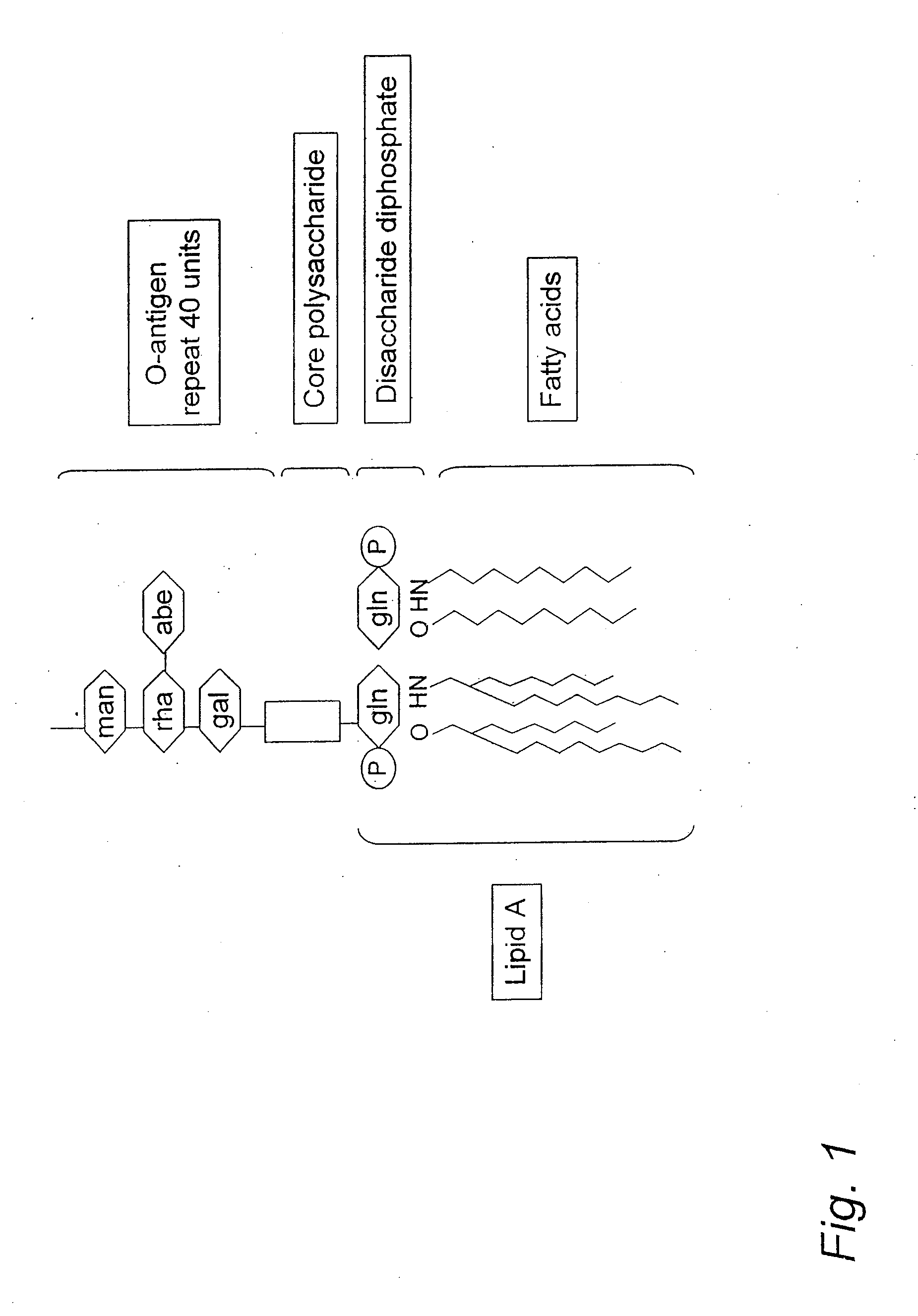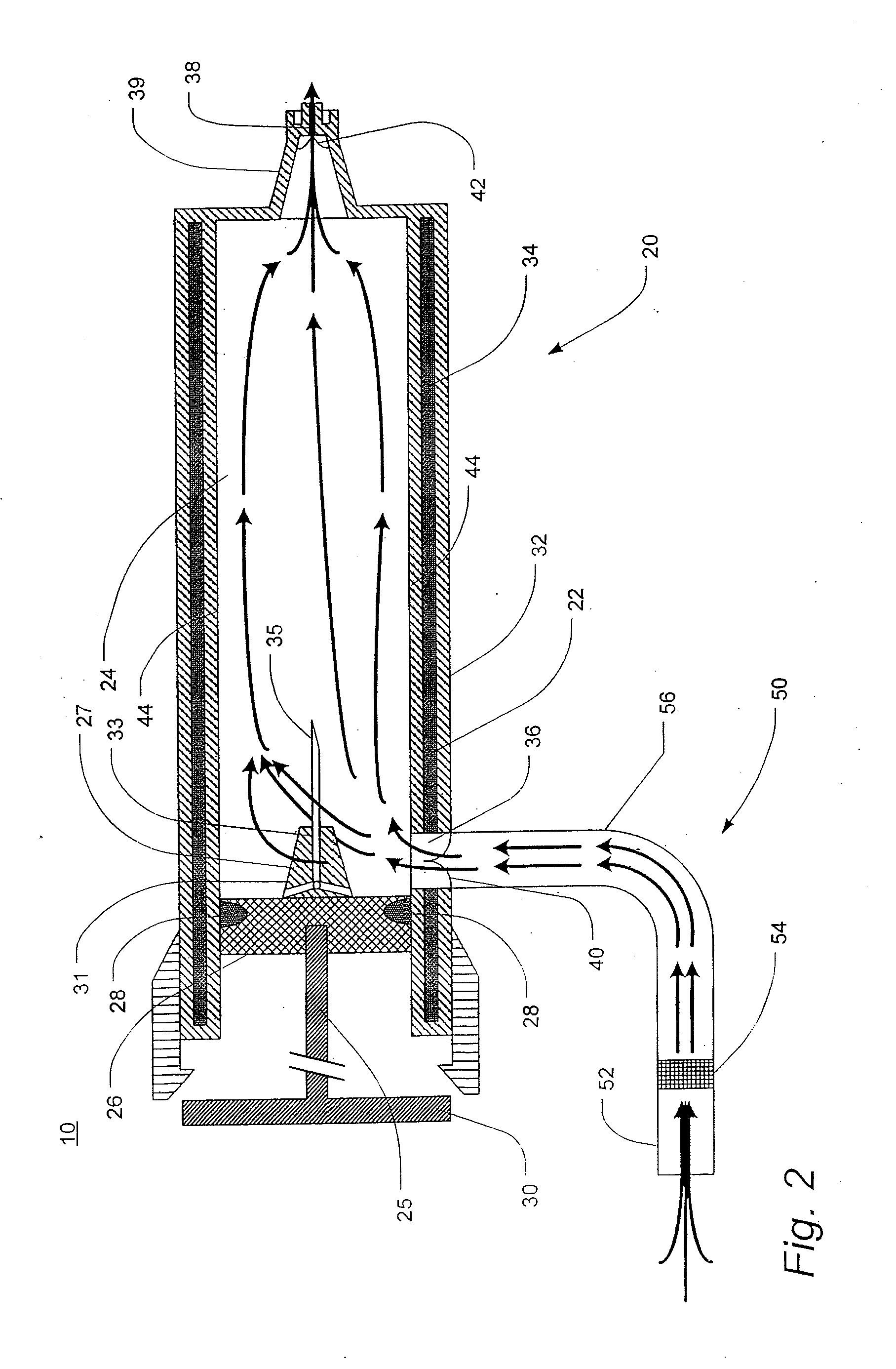Utilizing lipopolysaccharide in exhaled breath condensate to diagnose gram negative pneumonia
a technology of gram negative bacteria and exhaled breath, which is applied in the field of gram negative bacterial pneumonia diagnosis methods and devices, can solve the problems of sterile blood, high mortality rate, and difficulty in obtaining useful sputum samples from humans with pneumonia, and achieve the effect of promoting condensation
- Summary
- Abstract
- Description
- Claims
- Application Information
AI Technical Summary
Benefits of technology
Problems solved by technology
Method used
Image
Examples
example 1
[0121]LPS was detected in exhaled breath condensate samples from subjects that were awake, cooperative and able to breathe spontaneously in order to diagnose whether such subjects had Gram negative bacterial pneumonia according to the following procedure.
[0122]The subjects for the procedure were selected according to the following procedure. Subjects (N=8 per group) were recruited based upon three criteria: 1) diagnosis of pneumonia, 2) healthy patients who actively smoked more than 10 cigarettes per day and 3) healthy nonsmokers. To obtain subjects diagnosed with pneumonia, subjects diagnosed on standard clinical grounds, including cough productive of colored sputum, measured fever >101° F., a leukocytosis, evidenced by a peripheral total white blood count of >12,000 cells per cubic microliter, and the presence of an infiltrate on chest radiograph were selected. Exclusion criteria for subjects included any use of antimicrobial medications, acute illness or anatomical abnormality th...
example 2
[0130]LPS was detected in exhaled breath condensate samples from subjects that were breathing with the assistance of a ventilator in order to diagnose whether such subjects had Gram negative bacterial pneumonia according to the following procedure.
[0131]Six subjects participated in the study. Four of the ventilated subjects presented clinical evidence of pneumonia and were being treated with antibiotic therapy, and two of the ventilated subjects presented no clinical evidence of pneumonia and were used as controls.
[0132]Breath condensate samples were obtained according to the following procedure. The analyte was obtained from the exhaled breath condensate that accumulated in outflow tubing attached to the endotracheal tube of the ventilation system. Analyte appeared clear and non-turbid upon visual inspection.
[0133]The presence of endotoxin was detected according to the following procedure. An assay was performed on undiluted and diluted condensate using a chromogenic limulus assay ...
example 3
[0135]LPS was detected in exhaled breath condensate according to the following procedure. A commercially available 1-liter volume glass flask was prepared for collecting breath condensate samples according to the following procedure. The glass was heated to 400° C. for 3 hours to render its surfaces LPS-free. A sterilized, flexible polyvinyl tube, 11 mm in internal diameter, was arranged in fluid communication to a side-arm of the flask such that when a patient breathed into the tube, the patient's breath passed through the glass flask and out through an exit port. The flask was partially submerged in a dry ice and ethanol slurry mixture as a coolant to facilitate capture of exhaled breath condensate in the flask. The tube and flask were arranged in a fashion to keep the condensing flask above the level of the patient to prevent any capture of aerosolized saliva.
[0136]Exhaled breath was collected according to the following procedure. Eight subjects of varying health status breathed ...
PUM
| Property | Measurement | Unit |
|---|---|---|
| temperature | aaaaa | aaaaa |
| temperature | aaaaa | aaaaa |
| temperature | aaaaa | aaaaa |
Abstract
Description
Claims
Application Information
 Login to View More
Login to View More - R&D
- Intellectual Property
- Life Sciences
- Materials
- Tech Scout
- Unparalleled Data Quality
- Higher Quality Content
- 60% Fewer Hallucinations
Browse by: Latest US Patents, China's latest patents, Technical Efficacy Thesaurus, Application Domain, Technology Topic, Popular Technical Reports.
© 2025 PatSnap. All rights reserved.Legal|Privacy policy|Modern Slavery Act Transparency Statement|Sitemap|About US| Contact US: help@patsnap.com



